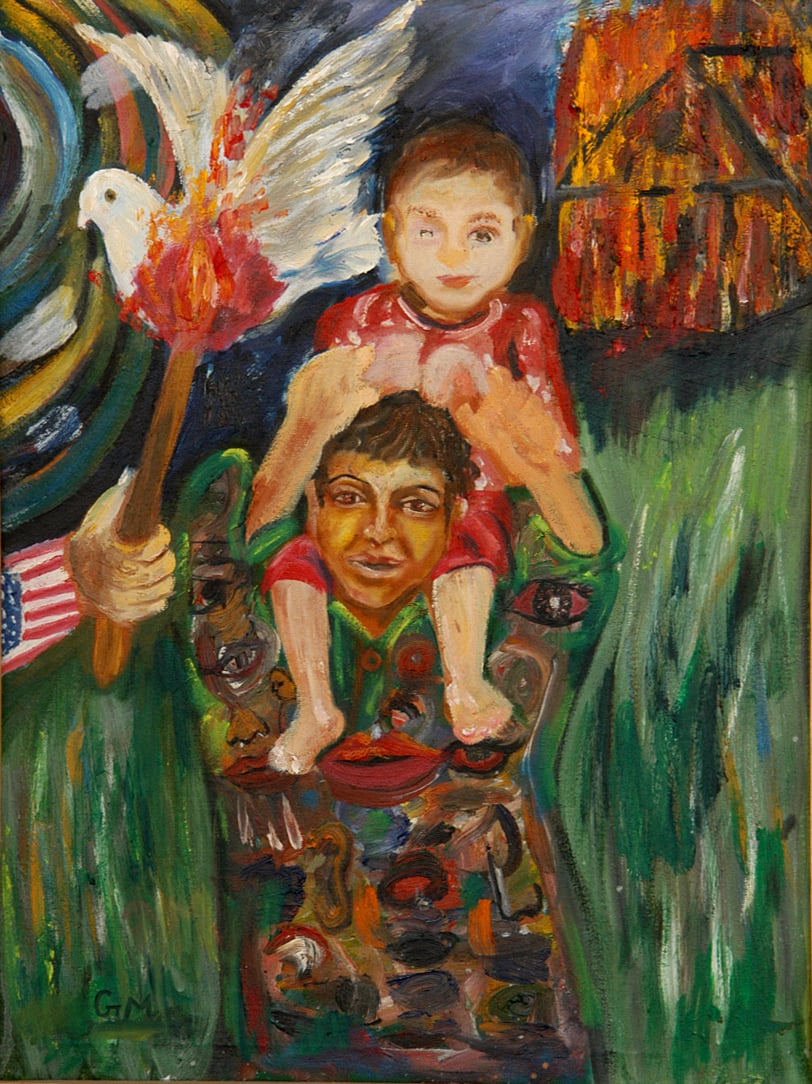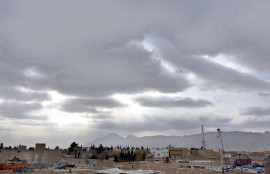
“Zia!” calls out DIG Nusrat Mangan. A tall, well-built man with striking green eyes saunters over and takes his place between me and the man who incarcerated him for four years. He smiles meekly.
“So… you used to be in jail,” I begin awkwardly. He laughs.
“I was released two years ago, now I am an artist.”
Zia is one of the ‘graduates’ of the Karachi Central Jail Fine Art lessons, initiated by the DIG prisons. “I like sketching and painting, but my favourite is charcoal,” he says. He speaks softly and politely, his eyes are not frenzied and nothing about him suggests the prison inmate. He is visiting the fourth exhibition - the second outside the jail - of the prisoners’ art work, held at the ArtChowk Gallery on Wednesday. The two-day exhibit displays 40 works of art, all done over the past year by inmates of the Karachi Central Jail.
Zia never tried to get a job, he is a freelance artist and the money he makes is enough for him to live comfortably. I ask him if he ever thinks about going back to his old ways - I don’t deem it polite to ask him what those were.
He squeezes his eyes shut, grins and shakes his head slightly. “No, there were a few other guys from the class who were released the same time as me. None of us has ever gone back [to crime].”
The programme began back in 2007 and DIG Mangan calls it his “dream come true”. He is a bespectacled man in a cotton shirt whose excitement about the project makes him sound more like an art student than a law enforcer. “In my eyes, fine arts are the strongest available medium to change a man,” he says. “Over the last few years we have seen examples of individuals who are feared and hated by society but are now very changed; a few of them have become full-time artists.”
Mangan approached a friend, artist Mehtab Ali, who went to Wahid Khiri, a photography teacher at the Central Institute of Arts looking for a teacher. Khiri agreed and roped in one of his fresh graduates, Sikandar Jogi. Both artists were wary at first. “The very thought of going into a jail is so scary,” says Jogi. “When we first went in they were all sorts of men there, with big beards and big bangles.”
“In my first class, this big, bearded man named Gaffa recited a sher [verse of poetry] to me and asked me ‘Sir, is this art too?’, from then on I stopped being afraid of them,” he says. “They are people who have made mistakes, but you can see the shame and repentance in their eyes. Nothing about their demeanor or manner is what you would imagine of men who have been convicted.”
There are about 4,000 prisoners in the jail, only 30 of them opt for the class. There are different stages of drawing and painting and eventually they are left to work on their own. They take about a week to complete one piece. The work varies from still lifes to imaginative sketches to oil paintings. Their choice of colour and sense of proportion are a testament to their teacher, Jogi.
“Their work has improved so much since our first visit!” says Riffat Alvi, artist and curator. She visited the jail years ago along with Naheed Raza and Jimmy Engineer. Jogi has been inviting as many artists as he can to come and talk to the inmates and inspire them. The art supplies are bought primarily through donations while the government pays the teachers.
The work is not garish, there is practically no sign of blood or weapons. Some of them like Ghulam Mustafa, an inmate with a life sentence, vent their frustrations with crimson flames. He has accepted his fate, and regrets it. “If I had found you when I was on the outside, I wouldn’t be here,” he once told Jogi.
Others display their anger with the justice system. The majority of the work is by Moosa, on trial for kidnapping and terrorist activities, and Sheerazi, accused of murder. Moosa’s work is all about women’s rights, child labour and the situation in Swat, his homeland. His piece on human rights was the most expensive painting in the exhibit at Rs7,000.
The first exhibit in 2008 raised about Rs117,000, it was handed to the artists in a public ceremony. The money helps them take care of their families during their incarceration. The exhibit was in the jail itself. “It attracted a much bigger crowd [than this],” says policeman Abdul Halim, one of the prison guards. “The visitors get to see the inside of the jail and talk to the inmates.”
“Their attitude gets better,” he says. “It’s like they are addicted to art, we never get any trouble during the classes.”
This year, the classes were introduced in the women’s prison and juvenile jail as well. I withdrew, leaving Mangan in the middle of an animated conversation with Alvi about the next steps - expanding to other district prisons and setting up a private gallery.
Published in The Express Tribune, June 9th, 2011.
A slideshow of images of their artwork can be viewed here.


1719211536-0/BeFunky-collage-(81)1719211536-0-165x106.webp)




















COMMENTS
Comments are moderated and generally will be posted if they are on-topic and not abusive.
For more information, please see our Comments FAQ